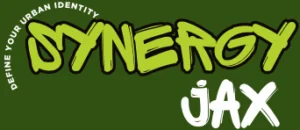In today’s fast-paced digital world, user-friendly no-code solutions are revolutionizing how individuals and businesses approach technology. These platforms empower users to create applications and automate processes without needing extensive programming knowledge. As a result, anyone can turn their ideas into reality, streamlining workflows and enhancing productivity.
No-code solutions are not just for tech enthusiasts; they cater to a diverse range of users, from entrepreneurs to marketers. By removing the barriers to entry, these tools enable creativity and innovation, allowing users to focus on what truly matters—building and growing their projects. As the demand for quick and efficient solutions rises, understanding the benefits of no-code platforms becomes essential for anyone looking to stay ahead in the digital landscape.
Table of Contents
ToggleOverview of No-Code Solutions
No-code solutions enable users to create applications and automate workflows without advanced programming skills. They offer intuitive interfaces that simplify development, allowing individuals to focus on functionality instead of coding complexities.
No-code platforms cater to various user profiles, including entrepreneurs, marketers, and small business owners. These tools provide pre-designed templates and drag-and-drop features, making application building straightforward.
Key benefits include:
- Accelerated Development: Projects can go from concept to deployment in days instead of weeks.
- Cost Efficiency: Reduced need for technical staff lowers development costs.
- Accessibility: Non-technical users can engage in app creation, democratizing technology.
- Flexibility: Users can modify applications quickly in response to evolving business needs.
Popular no-code solutions include platforms like Bubble, Webflow, and Airtable. These options empower businesses to innovate rapidly, enhance productivity, and streamline operations.
Overall, no-code solutions reshape the digital landscape, promoting accessibility and creativity while addressing the increasing demand for efficient and effective tools.
Benefits of User-Friendly No-Code Solutions

User-friendly no-code solutions offer significant advantages for businesses and individuals seeking to enhance their digital capabilities. These benefits support innovation and streamline processes across various sectors.
Accessibility for Non-Technical Users
Accessibility remains a primary advantage of no-code solutions. Users without technical backgrounds can develop applications and automate workflows effortlessly. Platforms like Airtable and Webflow enable users to design functional applications through drag-and-drop interfaces. Such accessibility encourages collaboration among teams, as employees from different departments contribute their insights without relying on developers.
Speed of Development
Speed of development is another critical benefit. No-code platforms dramatically reduce the time required to launch projects. By eliminating the need for extensive coding, businesses can prototype, test, and deploy applications quickly. For instance, users can create a functional landing page within hours instead of weeks. This rapid turnaround enhances agility, allowing organizations to respond to market demands swiftly.
Cost-Effectiveness
Cost-effectiveness is a vital aspect of no-code solutions. By utilizing no-code platforms, businesses save on development costs associated with hiring skilled programmers. Many no-code tools offer subscription-based pricing models, providing scalable options. As a result, companies minimize expenses while maximizing productivity, giving them a competitive edge in the digital landscape.
Popular User-Friendly No-Code Platforms
Several user-friendly no-code platforms enable individuals and businesses to create applications and automate processes efficiently. Below are some prominent examples:
Platform A
Bubble
Bubble stands out for its robust capabilities in building web applications without coding. Users can design responsive interfaces using drag-and-drop features, integrate databases, and implement workflows seamlessly. Bubble’s extensive plugin library enhances functionality, allowing users to expand their applications with ease. Its scalability accommodates both small projects and enterprise-level solutions.
Platform B
Webflow
Webflow excels in website design and development, empowering users to create visually stunning sites without writing code. It combines design flexibility with content management, enabling users to produce responsive websites that cater to mobile and desktop users alike. Webflow’s intuitive interface allows for the integration of animations and interactions, enhancing user experience. Its hosting capabilities ensure fast loading times and reliable performance.
Platform C
Airtable
Airtable blends spreadsheet functionality with database features, simplifying organization and collaboration for teams. Users can create custom databases, manage projects, and track workflows visually. Airtable’s extensive templates cater to various industries, making it easy for users to adapt the platform to their specific needs. Real-time collaboration allows team members to work together efficiently, improving productivity across departments.
Use Cases for User-Friendly No-Code Solutions
User-friendly no-code solutions cater to a variety of applications across different sectors. Their ability to streamline processes makes them invaluable for small businesses, educational institutions, and personal projects.
Small Business Applications
Small businesses leverage no-code solutions to build websites, manage workflows, and create customer relationship management (CRM) tools efficiently. Solutions like Bubble allow users to develop customized applications without prior coding knowledge. Platforms such as Airtable facilitate project management and data organization through intuitive spreadsheet-like interfaces. With minimal investment, small business owners can enhance their operational efficiency and adapt quickly to changing market demands.
Educational Purposes
Educational institutions utilize no-code tools to create interactive learning modules and manage administrative tasks seamlessly. Platforms such as Webflow enable educators to design engaging course websites that enhance student learning experiences. No-code solutions facilitate collaborative projects among students, breaking down technical barriers. Teachers can also automate grading and tracking assignments, allowing them to concentrate on student engagement and curriculum development.
Personal Projects
Individuals use no-code platforms to bring personal projects to life, including websites, apps, and more. Tools like Airtable help users organize personal tasks and goals, while Webflow allows for easy website creation tailored to individual interests. Creative individuals can develop prototypes for ideas without extensive programming experience, enabling passion projects to flourish. The accessibility of these tools nurtures creativity and empowers users to turn visions into reality.
User-friendly no-code solutions are transforming how individuals and businesses approach application development and process automation. By removing the barriers of technical expertise, these platforms empower users to take control of their projects.
As organizations continue to seek innovative ways to enhance efficiency and adaptability, no-code tools will play a pivotal role in shaping the future of digital solutions. With their ability to foster collaboration across departments, accelerate project timelines, and reduce costs, it’s clear that embracing no-code technology is essential for thriving in today’s competitive landscape.
The rise of these intuitive platforms signals a shift toward a more inclusive and creative digital environment, where anyone can contribute to building the tools they need.










